Feds expand efforts to fight wildfires by reshaping forests
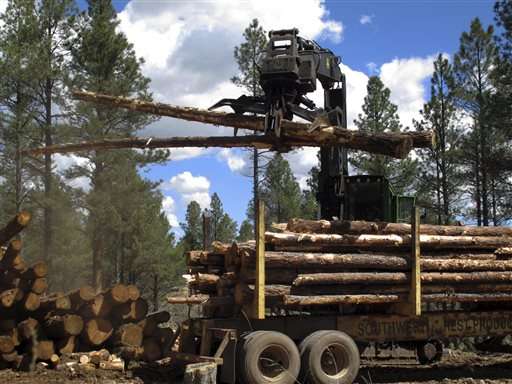
The towering ponderosa pine trees are cut down and bundled in quick succession as heavy equipment winds its way through a national forest as part of the largest federal effort to reshape the forests to prevent wildfires. The felled trees then are shredded of their limbs and eventually will be taken from the forest in northern Arizona to Phoenix, where they'll be turned into pallets.
Other areas of the Coconino National Forest are blackened intentionally by fire, giving native plants a boost and any wildfire less of a chance to explode into something catastrophic.
The complex wildfire-prevention effort encompassing four national forests—the Coconino, Kaibab, Apache-Sitgreaves and Tonto, all in northern Arizona—is known as the Four Forest Restoration Initiative. It aims to restore the forests to conditions ideal for wildlife, streams and cultural resources while creating a buffer for communities where large wildfires might devastate the landscape.
The Forest Service has about two dozen similar efforts nationwide, mostly in in the western U.S., that reflect a focus on speeding up the pace and scale of forest-restoration work. The Arizona venture is not only the largest, but it has marked a rare case where the government, environmentalists and the timber industry—longtime adversaries—have reached a consensus to allow the project to move forward on a large scale. It eventually will cover 2.4 million acres along a prominent line of cliffs that divides Arizona's high country from the desert. The biggest swath of the project—nearly 600,000 acres—was approved this month.
Forest Service Chief Tom Tidwell told a congressional panel last week that collaboration allows the agency to thin forests, help the environment, protect people from wildfires and create timber jobs while avoiding the risk of litigation that can put such work on the backburner. The work is moving forward despite budgetary challenges in the agency, Tidwell said.
In the Arizona initiative, environmental groups sought to protect tree canopies for species that depend on it, increase monitoring for the endangered Mexican spotted owl and reduce the number of protected owl areas where the thinning of trees would happen. As a result, the Forest Service is mostly leaving intact giant trees that are crucial owl and northern goshawk habitats and removing smaller ones instead.
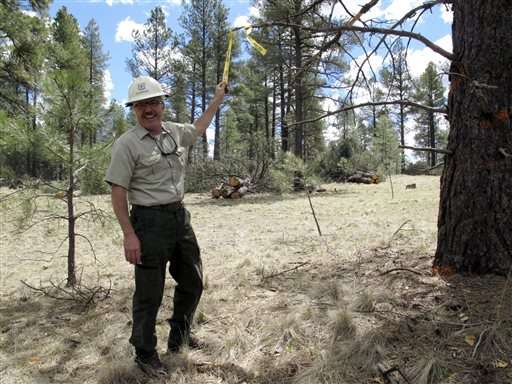
The larger, old-growth trees are more lucrative for the timber industry, which has been forced to redesign business models to put smaller trees to use, said Bill Greenwood, executive director of the Northern Arizona Wood Products Association.
"The fact they're thinning over there is good. It's good for the forest. It's providing jobs," he said. "Hopefully, they'll set up a volume (of timber) that's needed to meet the requirements. They're running way behind on the amount they're treating."
Conservation groups said they are satisfied with the project.
"There's movement toward agreement across the board, even if it's imperfect," said Todd Schulke of the Center for Biological Diversity. "We still have some significant differences with the Forest Service's approach. With (the initiative), we're able to get close enough."
There are also proven benefits to fighting wildfires. Returning parts of the forests to a time where trees were more spread out and fire naturally swept the landscape has been credited with helping save the towns of Alpine and Nutrioso in the 2011 Wallow Fire, the state's largest on record, and with keeping last year's Slide Fire from spreading into Flagstaff. Since 2010, at least 10 states have seen their largest wildfires on record, according to the Forest Service.
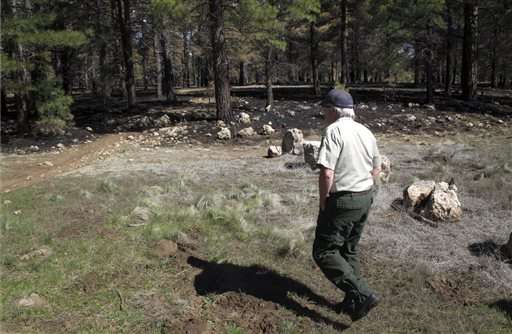
The first priorities for restoration in the Arizona project will be watersheds and the urban interface, where homes abut the forest or lie within it.
Just outside Flagstaff recently, piles of freshly cut logs stacked along a forest road filled the air with a pine scent while waiting to be hauled. Prairie dogs and squirrels scurried across the land as a red-tailed hawk flew over scorched land that released puffs of black dust when disturbed and smelled like a campfire.
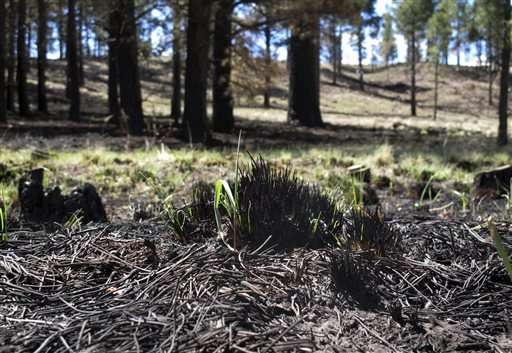
Dick Fleishman, assistant team leader for the forest restoration project, pointed out grasses and brush that are rejuvenated by prescribed burns and the absence of low-lying limbs on trees that would allow flames to climb up top where fires burn hotter and more intensely. Many of the trees in the 600,000 acres approved for restoration make for an unhealthy forest because they are around the same age and will need to be cleared out, he said.
"We're slowly but surely filling in the blanks so we can accelerate the restoration efforts," Fleishman said.
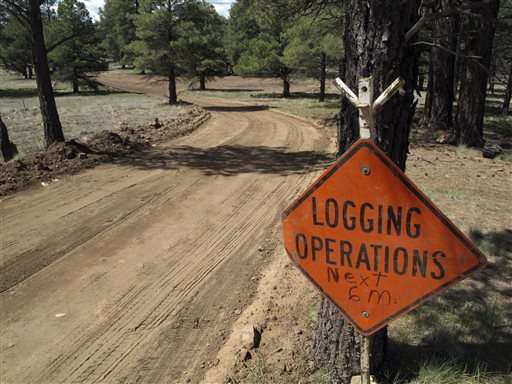
© 2015 The Associated Press. All rights reserved.

















